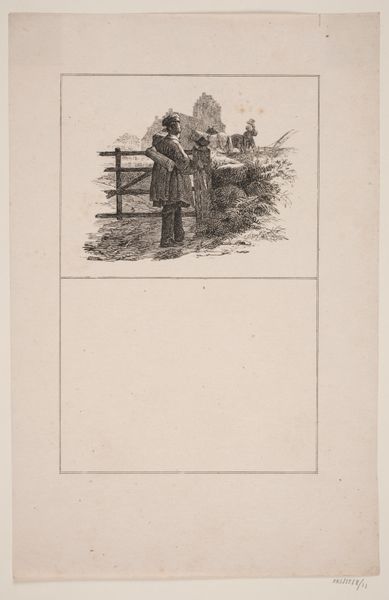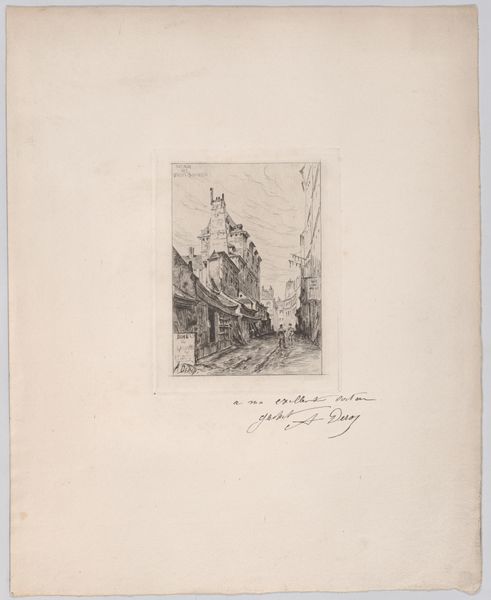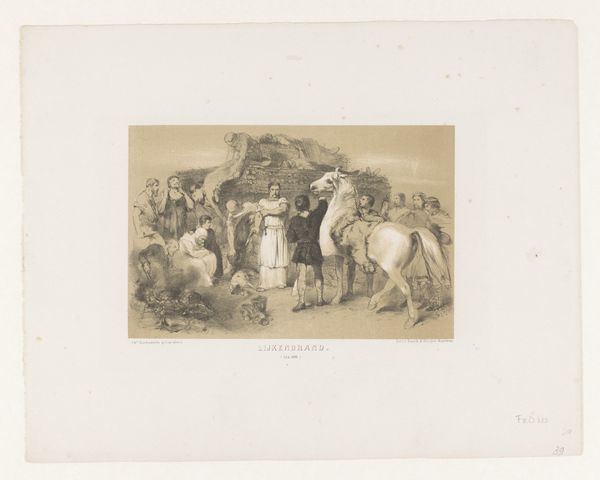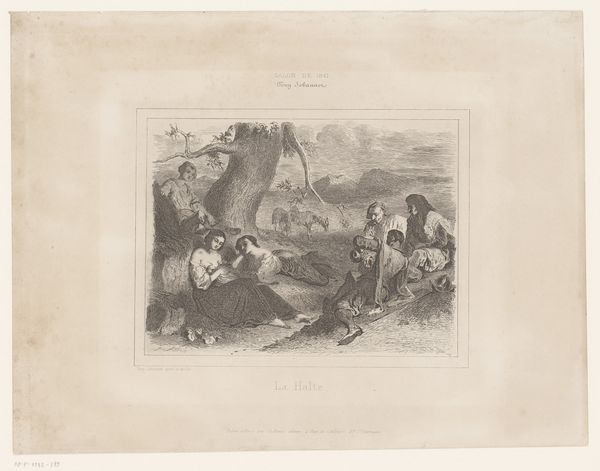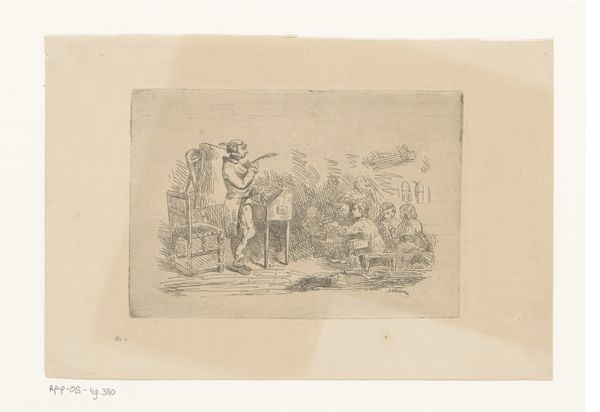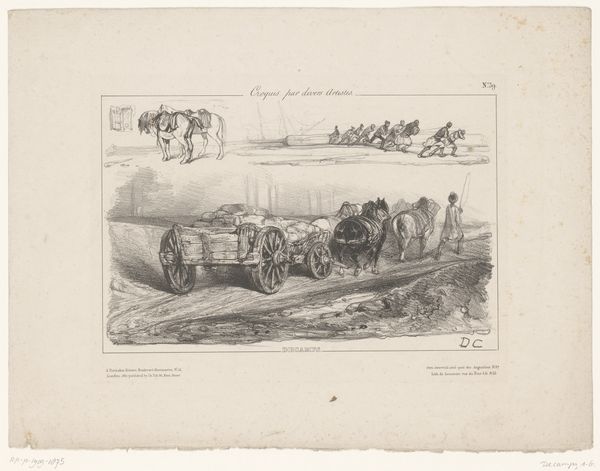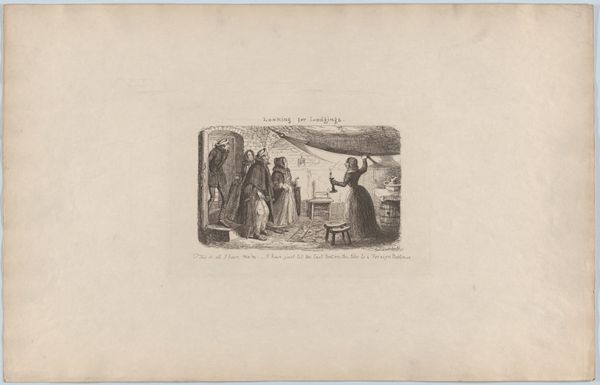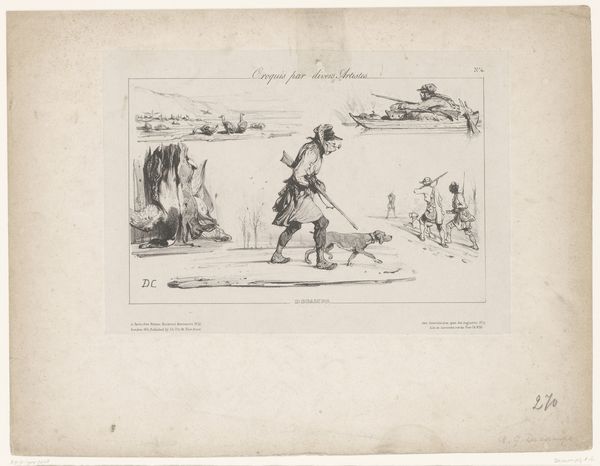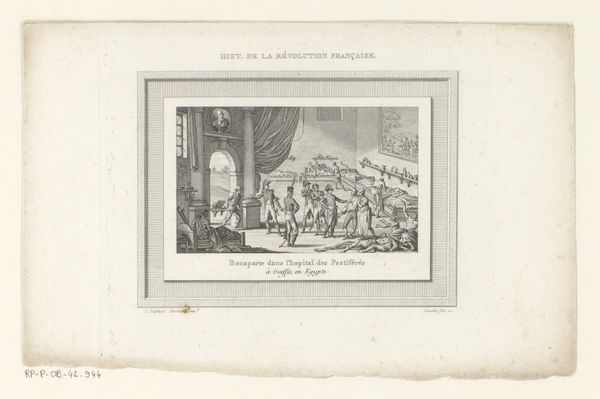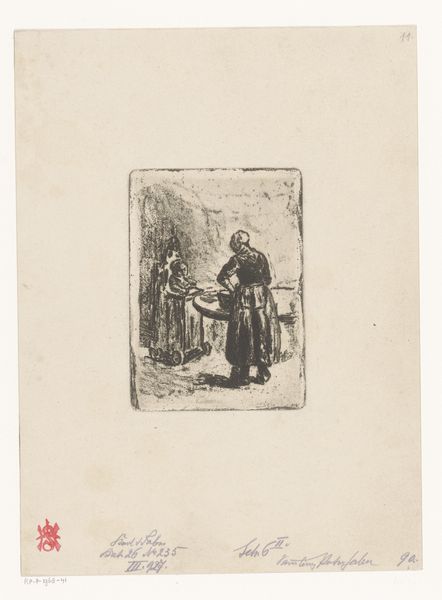
print, etching
#
narrative-art
# print
#
impressionism
#
etching
#
figuration
#
genre-painting
#
history-painting
Dimensions: height 129 mm, width 179 mm
Copyright: Rijks Museum: Open Domain
Editor: So, here we have an etching from 1881, "Invitation sent by print dealer Ch. Delorière in Paris". There's a really whimsical quality to it, with this cherubic figure on what looks like an invitation, almost like a playbill. How do you read the cultural context here? Curator: The playbill form itself is critical. Think about Paris in the 1880s, a city buzzing with artistic innovation but also rigidly structured by social hierarchy and institutions like the Salon. Print dealers played a pivotal role, acting as intermediaries shaping taste and access to art for a rising middle class. Who got to see art, and who decided what was good? Delorière's invitation becomes part of that social and commercial machinery. Editor: That makes sense. The figures standing next to the invitation, almost dwarfed by it…are they potential patrons? Curator: Exactly. They’re viewing both the announcement and the potential art that Delorière is offering. What does their placement suggest about their agency in the art world? Consider their attire and posture; are they passive viewers, or are they actively engaging with the cultural offerings? Editor: I see your point! The child looks pretty unengaged. Maybe the art world feels exclusive. The whole composition feels self-aware about the invitation itself being an event. Curator: Precisely. This print provides insights into how art was being disseminated, consumed, and judged in the public sphere. Art was becoming increasingly enmeshed with marketing and societal pressures. Editor: This really does put a new perspective on the artist-patron dynamic. It is like peeking behind the curtain of the Parisian art market at that time. Curator: Indeed. Thinking about the institutional forces behind art can deeply change our view of art history.
Comments
No comments
Be the first to comment and join the conversation on the ultimate creative platform.
